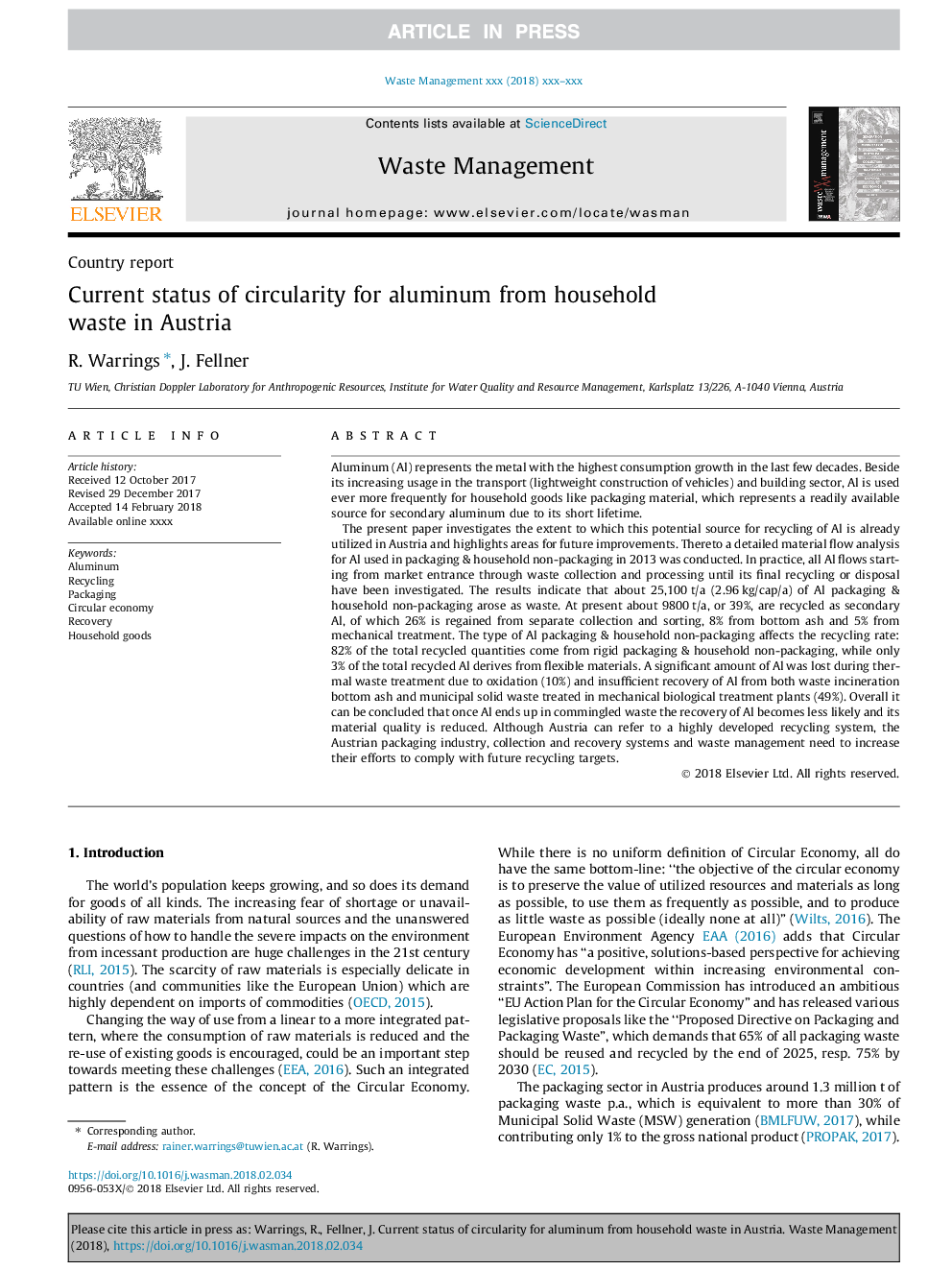| Article ID | Journal | Published Year | Pages | File Type |
|---|---|---|---|---|
| 8869613 | Waste Management | 2018 | 8 Pages |
Abstract
The present paper investigates the extent to which this potential source for recycling of Al is already utilized in Austria and highlights areas for future improvements. Thereto a detailed material flow analysis for Al used in packaging & household non-packaging in 2013 was conducted. In practice, all Al flows starting from market entrance through waste collection and processing until its final recycling or disposal have been investigated. The results indicate that about 25,100â¯t/a (2.96â¯kg/cap/a) of Al packaging & household non-packaging arose as waste. At present about 9800â¯t/a, or 39%, are recycled as secondary Al, of which 26% is regained from separate collection and sorting, 8% from bottom ash and 5% from mechanical treatment. The type of Al packaging & household non-packaging affects the recycling rate: 82% of the total recycled quantities come from rigid packaging & household non-packaging, while only 3% of the total recycled Al derives from flexible materials. A significant amount of Al was lost during thermal waste treatment due to oxidation (10%) and insufficient recovery of Al from both waste incineration bottom ash and municipal solid waste treated in mechanical biological treatment plants (49%). Overall it can be concluded that once Al ends up in commingled waste the recovery of Al becomes less likely and its material quality is reduced. Although Austria can refer to a highly developed recycling system, the Austrian packaging industry, collection and recovery systems and waste management need to increase their efforts to comply with future recycling targets.
Related Topics
Physical Sciences and Engineering
Earth and Planetary Sciences
Geotechnical Engineering and Engineering Geology
Authors
R. Warrings, J. Fellner,
